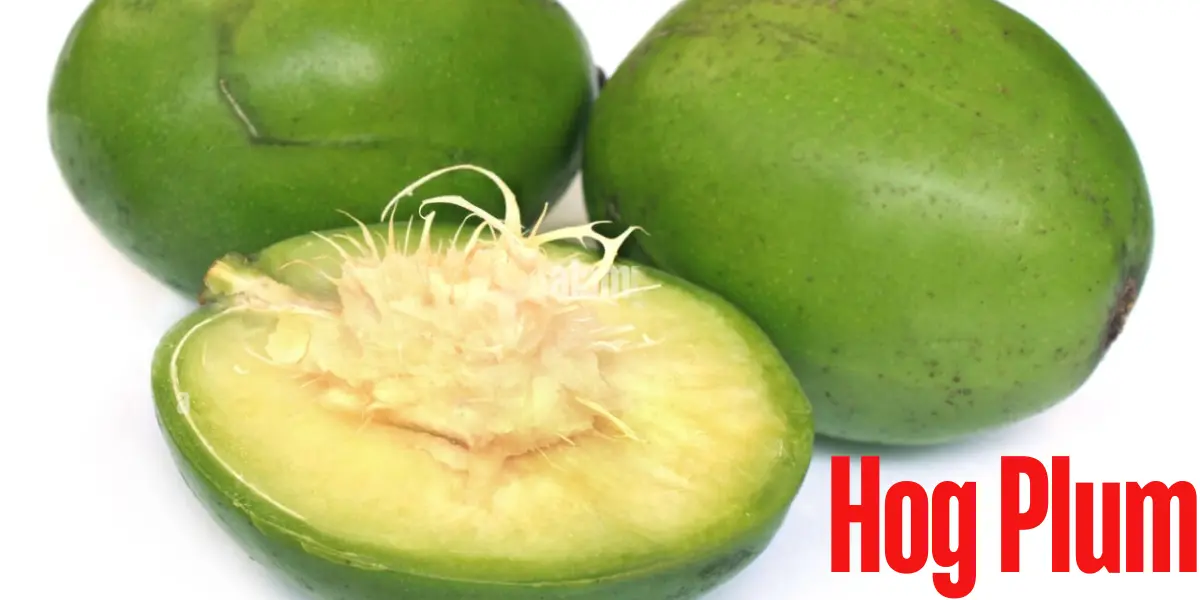Hog plum, known scientifically as Spondias mombin, is a tropical fruit that boasts a rich history and a plethora of health benefits. This often-overlooked fruit is gaining popularity due to its unique flavor and versatility. In this comprehensive guide, we delve into the benefits, uses, and cultivation of plum, providing you with all the information you need to appreciate and incorporate this fruit into your life.
What is Hog Plum?
Hog plum, also referred to as yellow mombin or Spanish plum, belongs to the Anacardiaceae family. The fruit is native to the tropical regions of the Americas and is now cultivated in various parts of the world, including Asia and Africa. plum trees can grow up to 20 meters in height and produce small, oval-shaped fruits that are typically yellow or orange when ripe.
Nutritional Value of Hog Plum
Hog plum is a nutritional powerhouse packed with essential vitamins and minerals. Here’s a breakdown of its nutritional content:
- Vitamins: Rich in Vitamin C, Vitamin A, and several B vitamins.
- Minerals: Contains calcium, potassium, magnesium, and iron.
- Antioxidants: High in polyphenols and flavonoids, which help combat oxidative stress.
Health Benefits of Hog Plum
1. Boosts Immune System
Hog plum is a potent source of Vitamin C, which is crucial for maintaining a healthy immune system. Regular consumption of plums can help ward off common illnesses such as colds and flu by strengthening the body’s natural defenses.
2. Promotes Digestive Health
The high fiber content in hog plum aids in digestion by promoting regular bowel movements and preventing constipation. Additionally, it supports the growth of beneficial gut bacteria, contributing to overall gut health.
3. Enhances Skin Health
Rich in antioxidants and vitamins, plums can improve skin health by reducing inflammation and protecting against free radical damage. Vitamin A in hog plum helps maintain healthy skin cells and promotes a youthful appearance.
4. Supports Eye Health
Hog plum contains significant amounts of Vitamin A and beta-carotene, both of which are essential for maintaining good vision. Regular intake of these nutrients can help prevent age-related macular degeneration and other eye conditions.
5. Anti-Inflammatory Properties
The polyphenols and flavonoids in hog plum have anti-inflammatory effects that can help reduce inflammation in the body. This makes plum beneficial for individuals with inflammatory conditions such as arthritis.
Culinary Uses of Hog Plum
Hog plum is incredibly versatile in the kitchen. Here are some popular ways to use it:
1. Fresh Consumption
The simplest way to enjoy hog plum is by eating it fresh. The fruit has a sweet-tart flavor that is refreshing and satisfying.
2. Juices and Smoothies
Hog plum can be juiced or blended into smoothies for a nutritious and delicious beverage. Its tangy flavor pairs well with other tropical fruits like mango, pineapple, and orange.
3. Jams and Jellies
Due to its natural pectin content, hog plum is ideal for making jams and jellies. These preserves can be enjoyed on toast, in desserts, or as a condiment.
4. Cooking and Baking
Hog plum can be used in a variety of cooked dishes, including sauces, chutneys, and stews. Its unique flavor adds depth and complexity to both sweet and savory recipes.
Cultivation of Hog Plum
Growing hog plum requires understanding its preferred climate and soil conditions. Here are the key factors to consider:
1. Climate Requirements
Hog plum thrives in tropical and subtropical climates. It requires warm temperatures and plenty of sunlight to produce abundant fruit. The ideal temperature range for plum cultivation is between 25°C and 30°C.
2. Soil Conditions
Hog plum prefers well-drained, loamy soils that are rich in organic matter. The soil pH should be slightly acidic to neutral, ranging from 6.0 to 7.0. Good drainage is essential to prevent root rot and other soil-borne diseases.
3. Planting and Propagation
Hog plums can be propagated through seeds, cuttings, or grafting. Seeds should be sown in a nursery and transplanted when seedlings are strong enough. Grafting and cuttings are preferred methods for maintaining specific cultivars.
4. Watering and Fertilization
Regular watering is crucial, especially during the dry season. plum trees require consistent moisture but should not be waterlogged. Fertilize with a balanced fertilizer to promote healthy growth and fruit production.
5. Pest and Disease Management
Hog plum is susceptible to various pests and diseases, including fruit flies, aphids, and fungal infections. Regular monitoring and the use of organic pesticides can help manage these issues effectively.
Conclusion
Hog plum is a remarkable fruit with numerous health benefits and diverse culinary applications. Whether you’re interested in its nutritional value, culinary uses, or cultivation methods, this guide provides you with the comprehensive knowledge needed to appreciate and utilize plum to its fullest potential.
Read our more Blogs…



